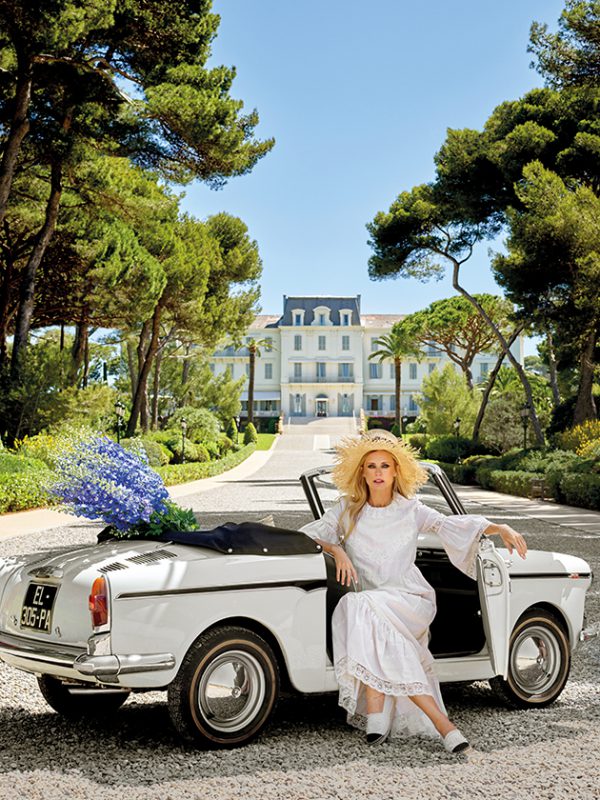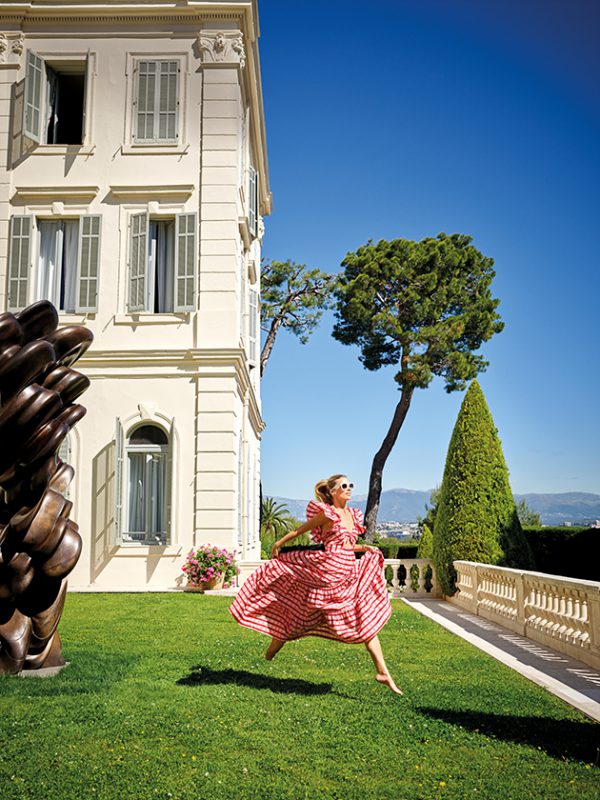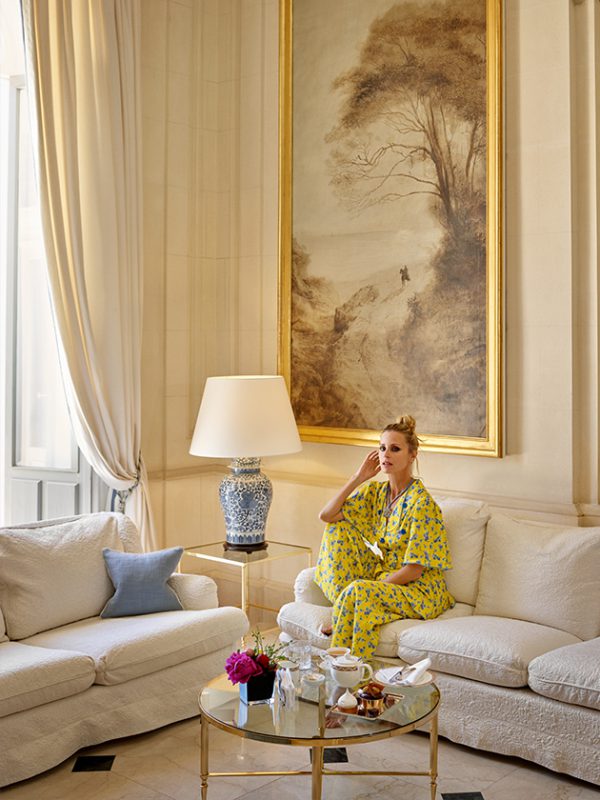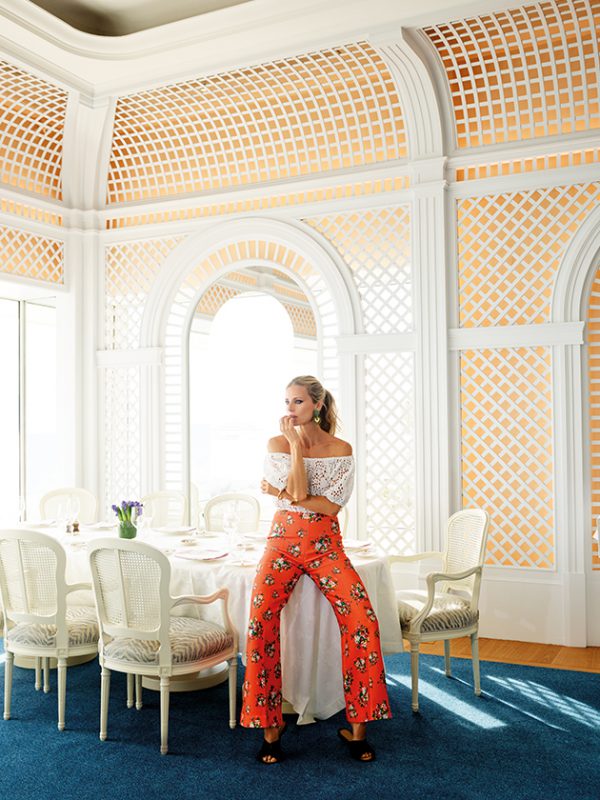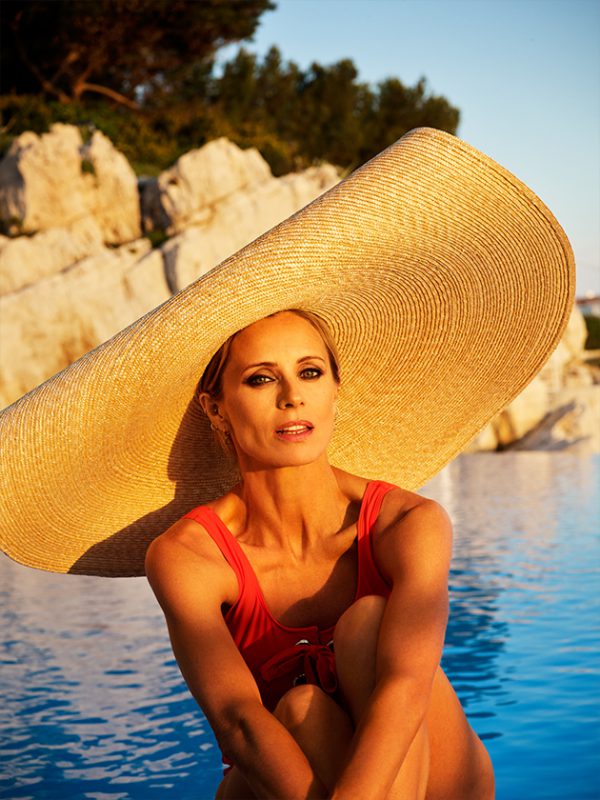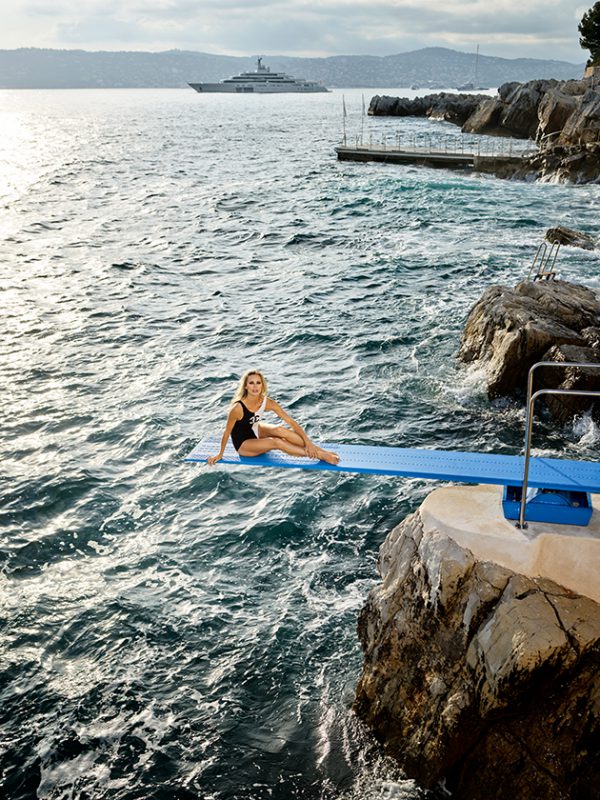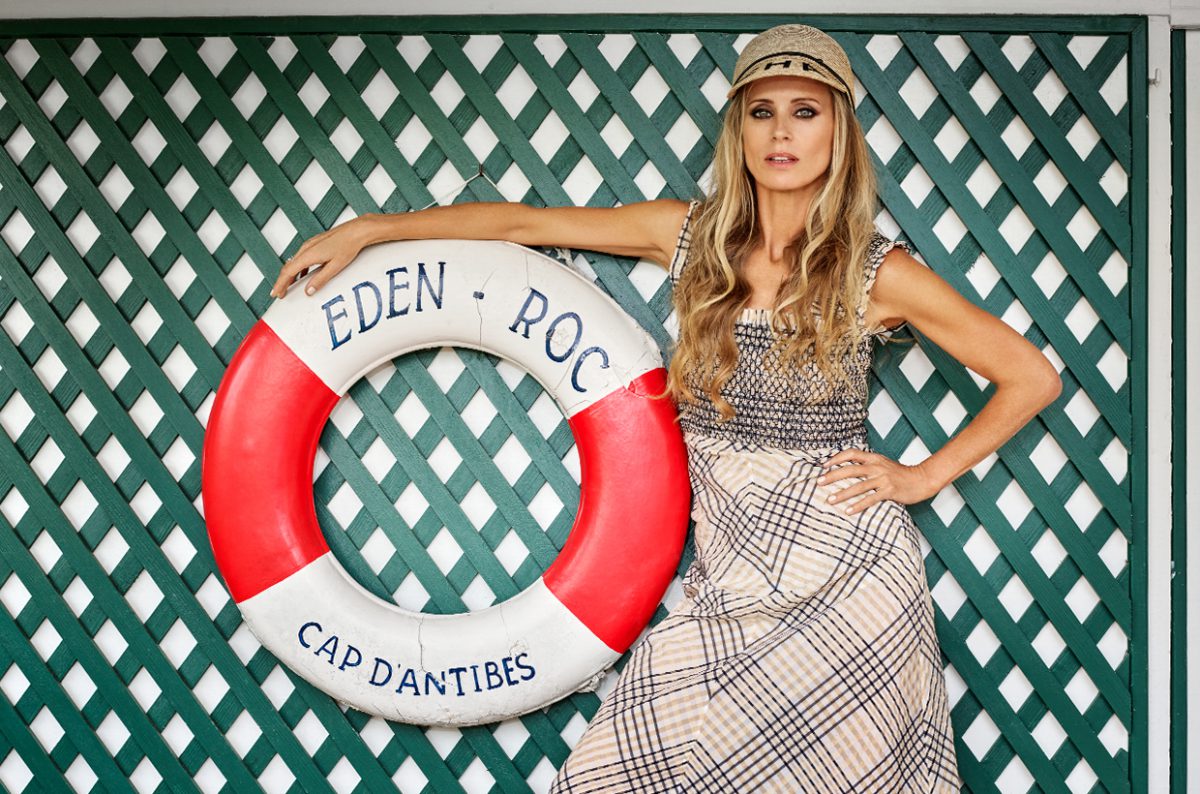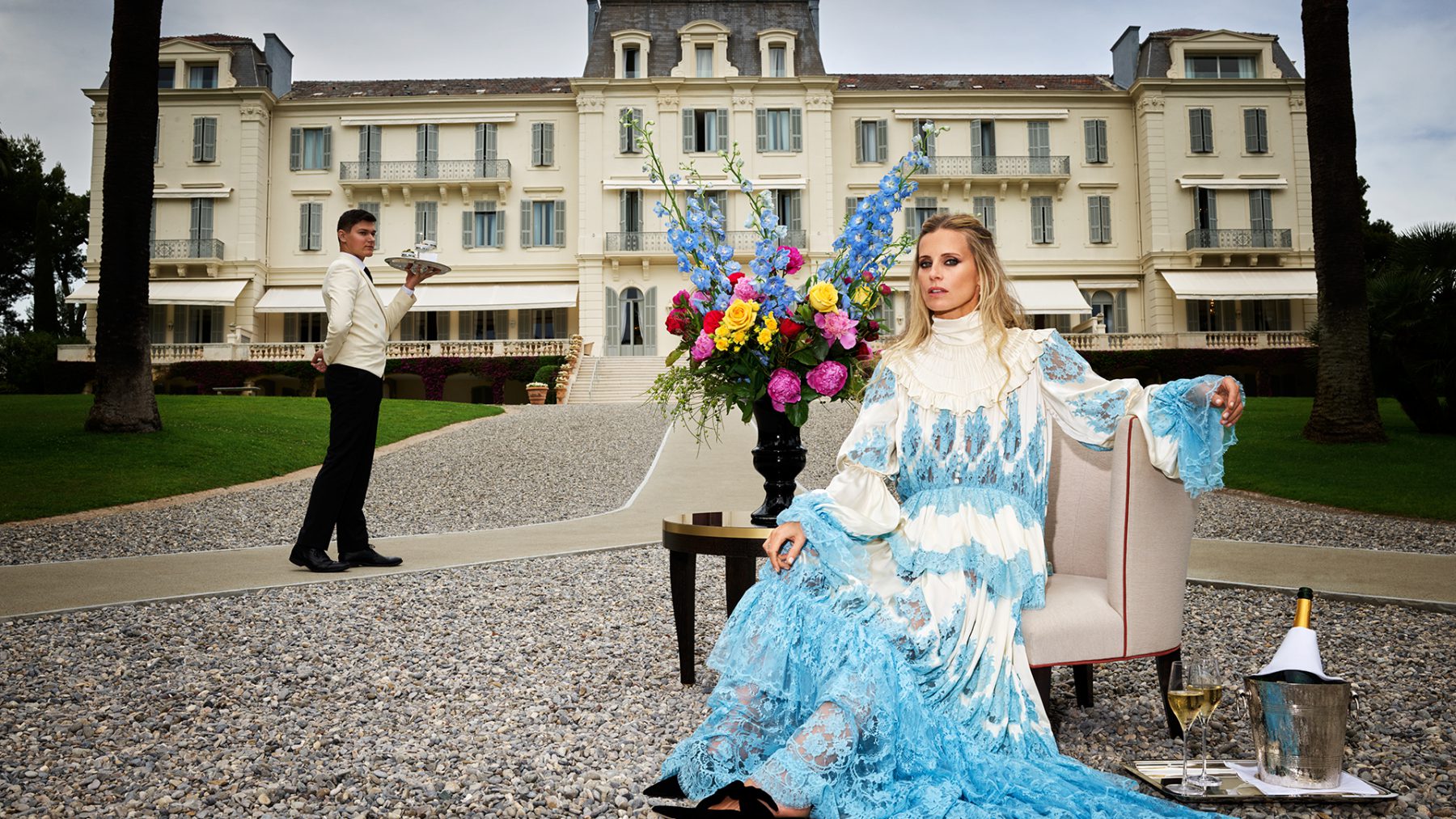The Grande Dame of the Côte d’Azur by Steffi Kammerer | 6th March, 2020 | Personalities
It’s a magical place where you forget time. And once you’ve been here, you cannot wait to come back. This year, the uniquely glamorous Hôtel du CapEden-Roc on the French Riviera turns 150. The guests are the hotel’s most valuable asset of all: Some families have been coming here for generations. So hats off – and happy birthday!
“It’s the guests who are responsible for the hotel’s mythical status.” PHILIPPE PERD
By the time you read this, the Côte d’Azur’s most famous hotel will only have a few weeks left to spruce itself up for the season. In mid-April the first guests will arrive after the winter break, and a little later the craziest few weeks of the year will begin when the film festival gets underway. Then, in summer, the Hôtel du Cap-Eden-Roc, where generations have come in search of retreat, will focus its thoughts on its big birthday and celebrate: 150 years that have seen it become a home away from home for many a guest. Perched on the southern tip of the Cap d’Antibes between Cannes and Nice, the hotel is the quintessence of timeless elegance.
A creamy-white palace by the sea with dove-gray shutters. It’s the kind of place that takes your breath away – at the very latest when you walk through the lobby and the door opens onto the huge park. Standing at the top of the wide, dramatic marble staircase, you find yourself gazing down a long avenue at the glittering Mediterranean. The path is lined by 100-year-old pines and palms that cast photogenic shadows. The only sounds are the screaming of gulls and the plop of tennis balls making contact with the ground. There it is, spread out before you, the promise of vacation and carefree days, and it’s enough to stop even business moguls and studio bosses in their tracks: You want the moment to last forever. The park connects the main building with the Eden-Roc Pavilion, which was completed in 1914. The same year, the famous saltwater pool was blasted out of the rock with dynamite. Those who find the pool too crowded can opt for one of the private cabanas – little white huts right on the water’s edge. They’re not exactly cheap: Having your peace and quiet for the day will cost you more than €500 – as much as a very luxurious room elsewhere. But who wants to think about pesky numbers? Ordering another Bellini sounds like a much better idea. It’s not hard to find a waiter: The hotel employs more than two excellently trained members of staff per guest. Everything exudes an old-fashioned and very distinctive opulence. Since 1900, there’s even been a dog cemetery in the park – complete with miniature headstones; it’s right next to the rose garden. But there’s a condition for burial: The animal has to have died here.
So now the famous hotel is about to turn 150. In celebration of this milestone birthday, it’s treating itself to a 300-page coffee table book: Hotel du Cap-Eden-Roc: A Legend on the French Riviera, available from Amazon in May. The introduction was written by Graydon Carter: The long-serving editor-in-chief of Vanity Fair has known the hotel for decades. For many years, the parties he hosted here during the film festival were the most sought-after in town.
In the summer months, it’s mostly only regulars who get to book a room at the Hôtel du Cap – preferably always the same one. Families from all over the world have been coming here for three or even four generations, often timing their stays to meet up with one another. Their children learn to swim here, and boisterous teenagers spend their days dangling from the ladders, swings and ropes the hotel has installed over the Mediterranean. In the evenings, everyone gets together on the roof of the pavilion to enjoy sunset at the champagne bar. It’s like looking out over the railings of a grand ocean steamer.
The whole thing has the character of a private club. Some members of staff have been with the hotel for decades too, including Michel the porter and Giovanni the butler: Both of them have been working here for more than 40 years. And when the historical wood-paneled elevator takes you upstairs, you discover that the rooms are just as timeless as everything else. Subtle shades of gray on the walls, floral fabrics for the couches and curtains. Every day, fresh roses from the garden are placed on the bedside table. But while the hotel is historic, it’s nothing like a museum: It’s got too much joie de vivre for that. Take the cream-colored Fiat convertible from the 1950s that’s available to guests, for example, an original Autobianchi Bianchina “EdenRoc.” Brigitte Bardot drove one just like it. This particular model, which guests can borrow for an elegant spin, has bright-blue leather seats and puts you in a good mood as soon as you set eyes on it.
The hotel has only belonged to two families in the course of its long history. You sense that. Some members of staff have been with the hotel for decades too, including Michel the porter and Giovanni the butler.
In addition to the main house and the Eden-Roc Pavilion, the hotel complex also contains a residence called Les Deux Fontaines and two separate villas, each with its own pool. A third and considerably larger villa will be added in July, providing its occupants with 400 square meters of floor space. There are 118 rooms and suites in total, including the magnificent Eden-Roc Suite with its 250-square-meter roof terrace and sea view. The main house was built in 1870 by Hippolyte de Villemessant, the founder of French newspaper Le Figaro. He intended it to become a retreat for authors and journalists, a place that would help them come up with new ideas. But as sometimes happens with even the best of plans – it didn’t work out. By the time several other owners had tried their luck in vain, parts of the house had already fallen into disrepair. In 1887, it was bought by Italian Antoine Sella. He spent the next two years having it renovated. Then he opened the hotel and, with some masterly moves, succeeded in attracting the international jet set. Aristocrats and top Hollywood stars discovered the hotel’s charms.
And today, every corner is like looking back through time: That’s where Kirk Douglas sat on the wharf, dangling his wooden water ski. This is where Marlene Dietrich lay reading, Fred Astaire liked to go for a stroll over there, Elizabeth Taylor and Richard Burton used to fight right here, and the great producer Darryl F. Zanuck played cards with the Aga Khan in this very spot. Chagall always spent the month of August here. The writer George Bernard Shaw was another regular, and could often be spotted carrying a conspicuously large parasol. Coco Chanel came here, as did John Lennon and Yoko Ono, the Kennedys and Churchill, Picasso and Hemingway. F. Scott Fitzgerald paid literary tribute to the hotel in his novel Tender is the Night.
“In a way, part of the hotel belongs to our longstanding guests.” PHILIPPE PERD
There are stories like the one about Gérard Depardieu and Robert De Niro having a shouting match by the pool because one didn’t invite the other to his birthday party. Or Johnny Weissmuller letting out his famous Tarzan call in the lobby. Bruce Willis once reserved a table for 30 and showed up with 300 people. And a few years ago, Brad Pitt, Matt Damon and George Clooney were spotted playing cricket on the lawn one morning. There have been a few little scandals over the years too, of course: Kate Moss once trashed the hotel room she shared with Johnny Depp, and Lars von Trier pulled up to the hotel in a huge RV. But those were the sins of youth, and both are meanwhile welcome guests again. There are stories of a very different kind as well, like the one about the regular guests chipping in to help the family of a porter who’d had an accident. Since 1969, the hotel has belonged to the German industrialist family Oetker. Five years before purchasing it, Maja and Rudolf-August Oetker had discovered the property from the water while they were sailing in the area. They wanted to buy it right away, but it was too expensive. In the end, they got their hotel after promising the Sellas to preserve its spirit and not dismiss the staff. Today the hotel is part of the steadily growing Oetker Collection, which already owns nine unique grand hotels all over the world. They include Le Bristol in Paris, the Brenners ParkHotel in Baden-Baden and the Eden Rock in St. Barths.
So the hotel has only belonged to two families in the course of its long history. You sense that. And the managers here don’t come and go quickly either. Philippe Perd has been running the ship for more than 15 years. “It’s the guests who are responsible for the hotel’s mythical status,” he says. Perd has been director since 2005, when he took over the helm from Jean-Claude Irondelle. His predecessor had run the place for 35 years. Every winter, the influential hotelier travelled to New York and Los Angeles and hosted exclusive cocktail and dinner parties. The film studios thanked him by holding receptions at the Hôtel du Cap. Things were pretty strict under his auspices: Cell phones were banned at the pool and, according to the Wall Street Journal, Jacques Chirac wasn’t allowed into dinner one evening because he wasn’t wearing a tie. There were no TVs or minibars in the rooms – which is all the more shocking when you consider that, for the kind of luxury guests who stay here, it’s perfectly normal for even the bathroom to be fitted out with all manner of high-tech gadgets. Those who couldn’t stand the silence had to ask the butler to bring them a television set. And maybe a hairdryer while he was at it – that’s something else the rooms didn’t have.
It was the dynamic Philippe Perd who brought the hotel into the present with his steady hand and delicate touch. 2007 saw the start of a four-year refurbishment program. But – and that was the trick – nobody was supposed to see it. At Perd’s urging, Maja Oetker eventually allowed TVs in all the rooms. And in April 2011, the hotel opened its doors after a 67-million-dollar facelift. Minibars and big flatscreen TVs have been standard ever since. And you can pay by credit card these days too (until 2006, bills had to be settled in cash or by bank transfer). But there’s one thing that will never be introduced here: plastic cards for opening the rooms. At the Hôtel du Cap, the keys are made of brass, just like they’ve always been. Arrival by helicopter? Certainly not – Maja Oetker decided that years ago, believing the noise would be too disruptive. “We’re not nouveau riche. Anybody who doesn’t like it can go somewhere else,” she once said. She personally oversaw the design of every single room, choosing the furniture and paintings, selecting the fabrics and colors. “We’ve listened to our guests and their wishes very carefully in recent years,” said Philippe Perd when the renovations were finished. “The result is exactly what we set out to achieve: We’ve renovated the hotel so sensitively that it looks as if everything is just as it always was, only the details have changed.”
And in its own way, the Hôtel du Cap definitely does move with the times. “The new generation,” says Perd, “shares its experiences on Instagram. My loyal guests might not know much about that kind of thing – but their children certainly do.” He also knows exactly how many followers his hotel currently has: “Nearly 120,000. By the end of the year it will be 150,000.”
While the film festival is taking place, the Promenade de la Croisette is packed with people. Which is why the most sought-after hotel during those weeks is not in Cannes itself but half an hour up the coast. Or five minutes by boat: The hotel has its own private landing stage, so it’s easy to reach by sea. Getting your hands on a room here at that time of year is difficult – and only possible at all if you book for all 12 nights of the festival. A good third of the rooms always goes to regulars: Even Hollywood stars like their routines. Since 2009, the amfAR Gala has been held at the Hôtel du Cap-Eden-Roc in May as well, rather than up in the mountains above Cannes as it used to be. This move is Perd’s doing too, as is the limousine service that now meets any guest who stays for at least four nights at the airport. He has also brought threestar chef Éric Frechon on board as consulting chef: The hotel’s cuisine is aiming for new heights in this special anniversary year. Accordingly, both restaurants were gutted and completely redesigned during the winter break. “But we’ve preserved their DNA,” says Perd: Because the new look wasn’t to be too modern, the furnishings were specially designed for the purpose. “We’ve managed to build a subtle bridge between past and present.”
Getting your hands on a room here during the Cannes Film Festival is difficult – and only possible at all if you book for all 12 nights. A good third of the rooms always goes to regulars: Even Hollywood stars like their routines.
In summer, two exclusive events will be held in celebration of the big birthday, each with 250 loyal guests. In keeping with the hotel’s character, they will take the form of elegant dinners rather than big parties at the pool. But Perd isn’t giving away any details – that would spoil the surprise. And the way he sees it, his guests deserve a big thank you. He’s had countless conversations with them, asking their views on colors and fabrics. “We’re not just any old five-star hotel, and we don’t want to become one – ever.” That means extreme caution is called for whenever changes are made. “Our long-standing guests don’t want their hotel to change. And in a way, you could say part of it belongs to them. The same way you can own a piece of paradise.”
